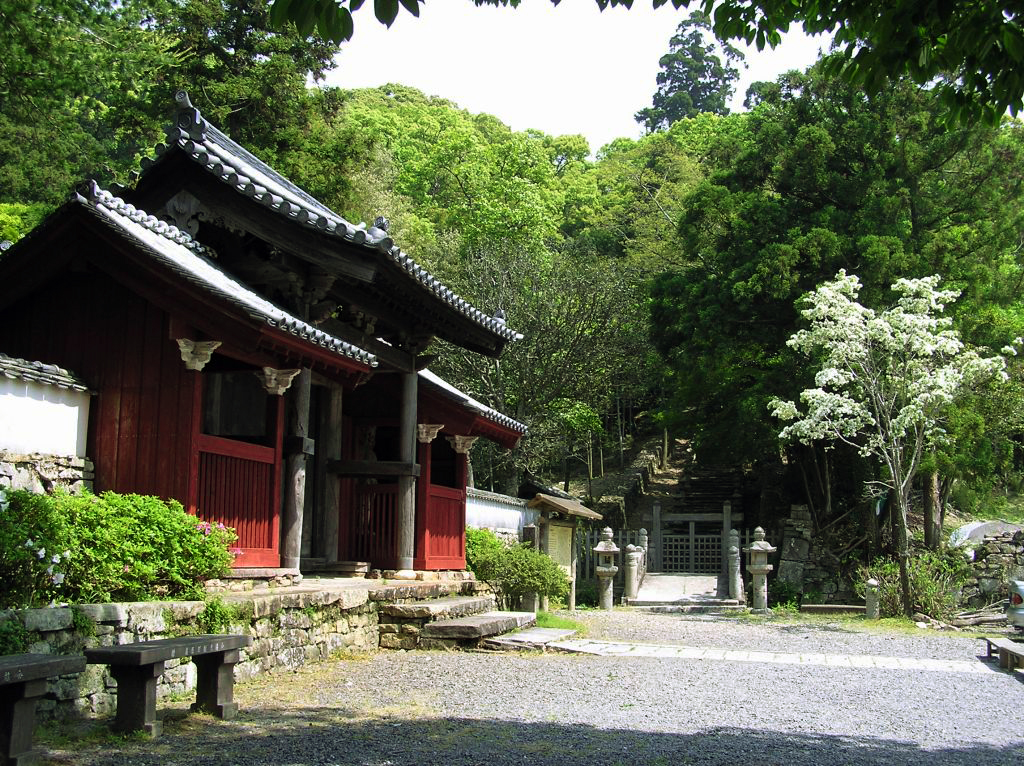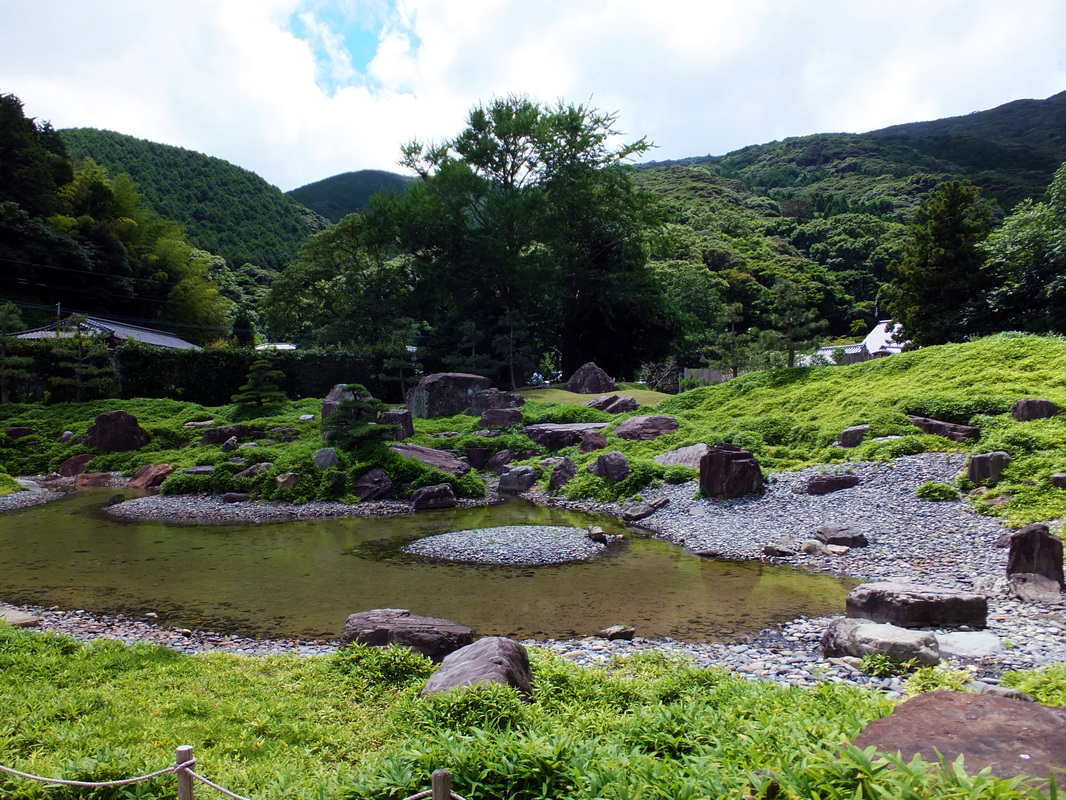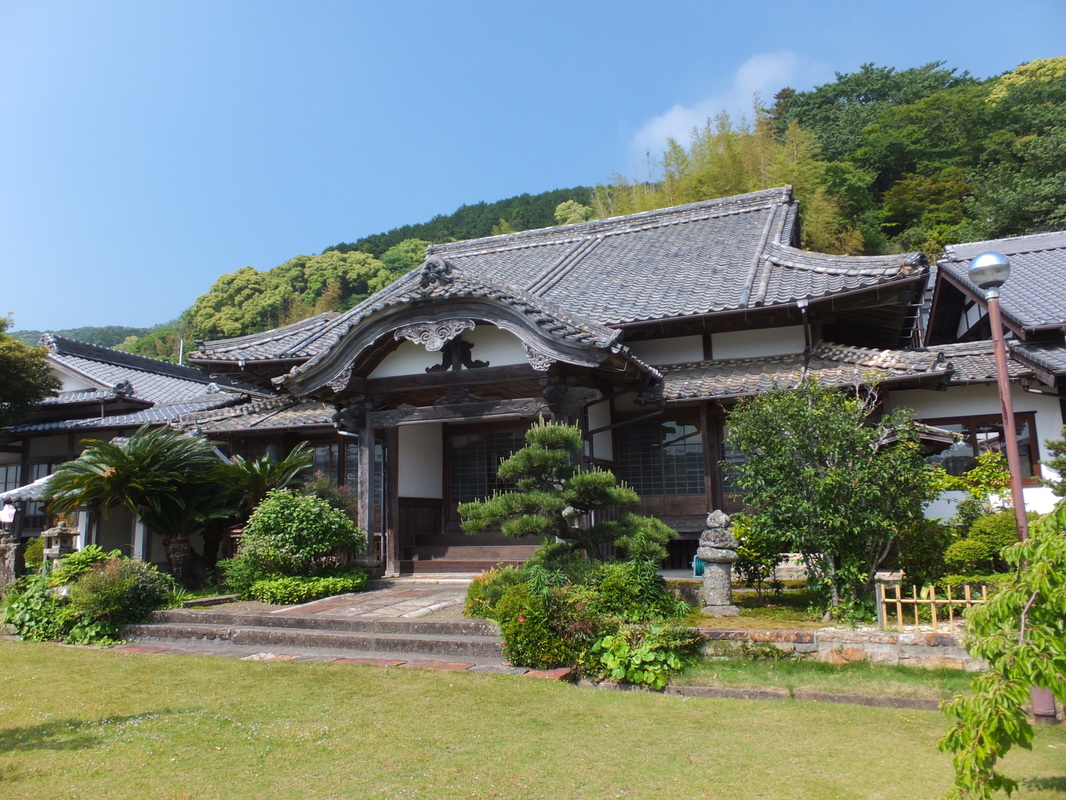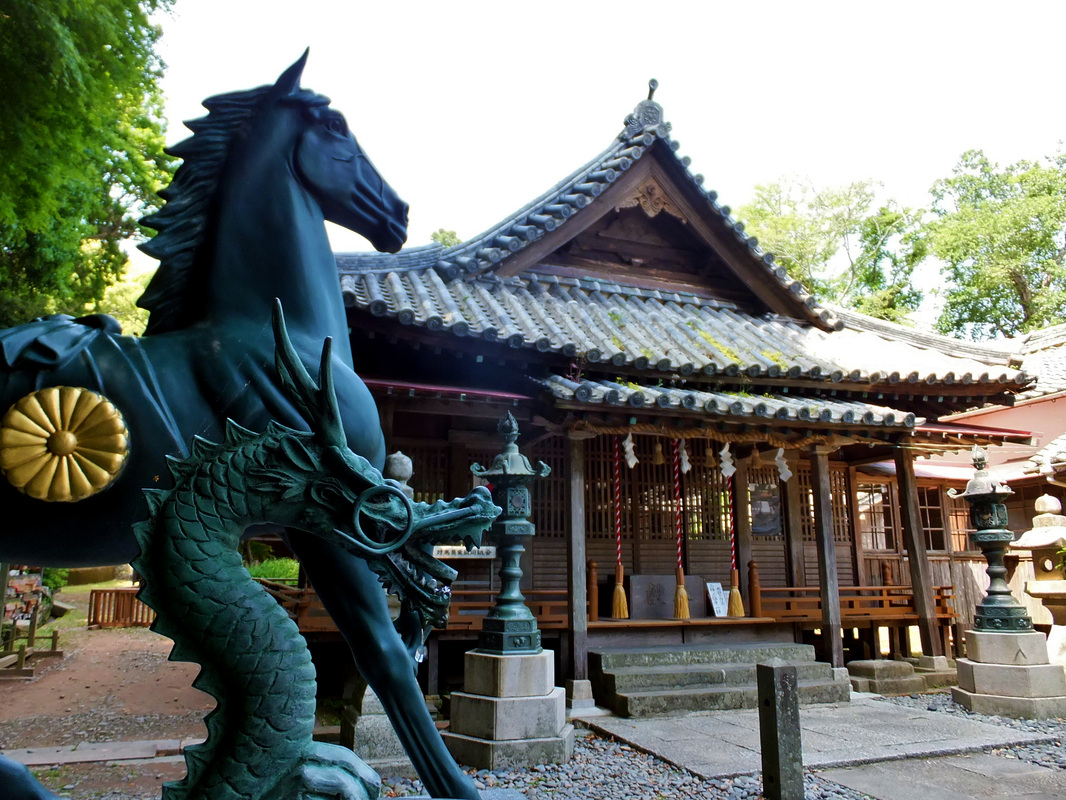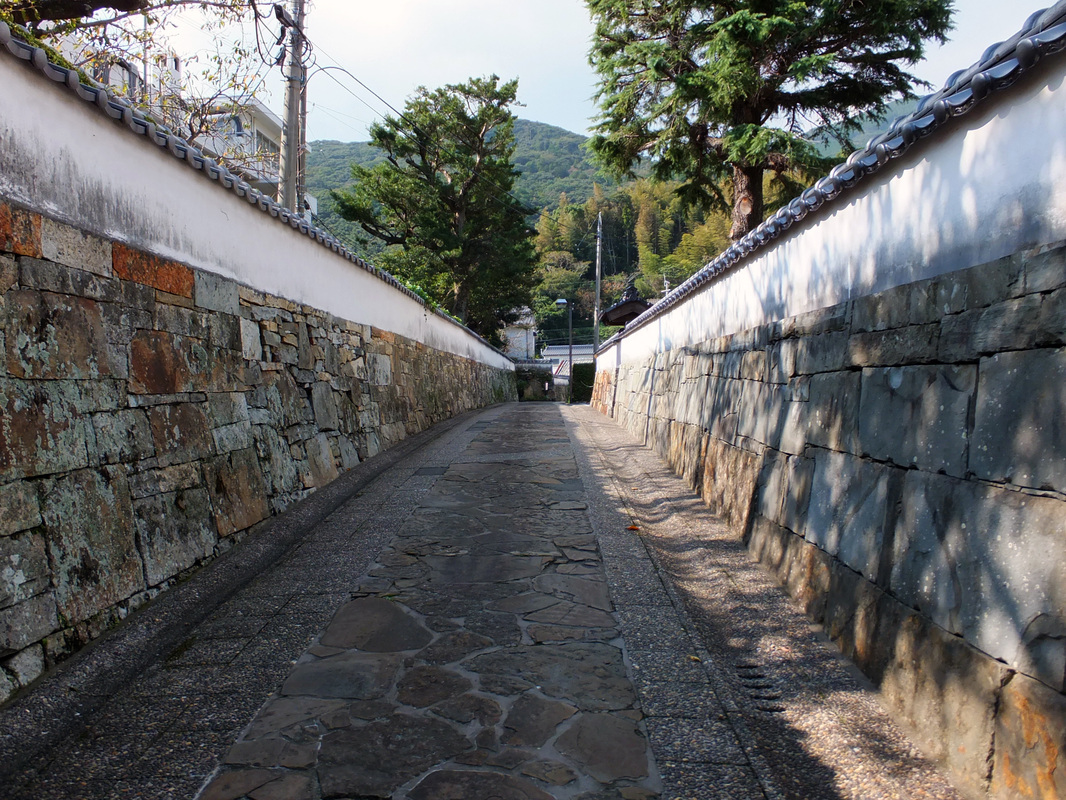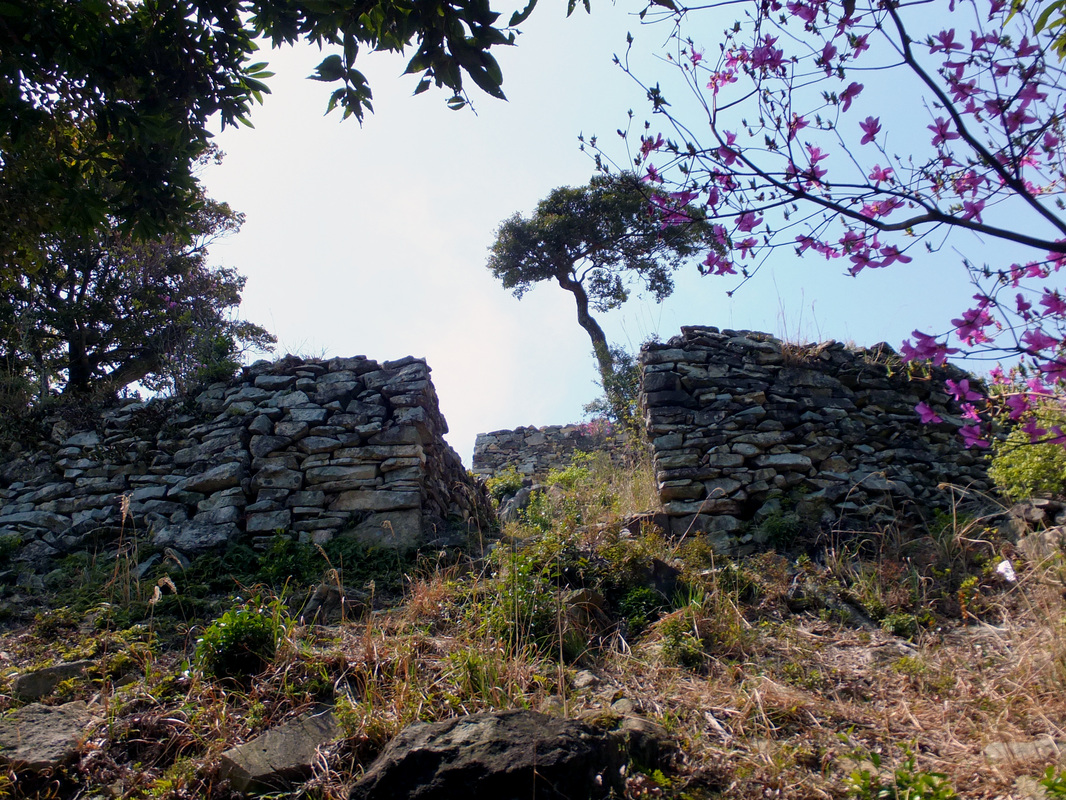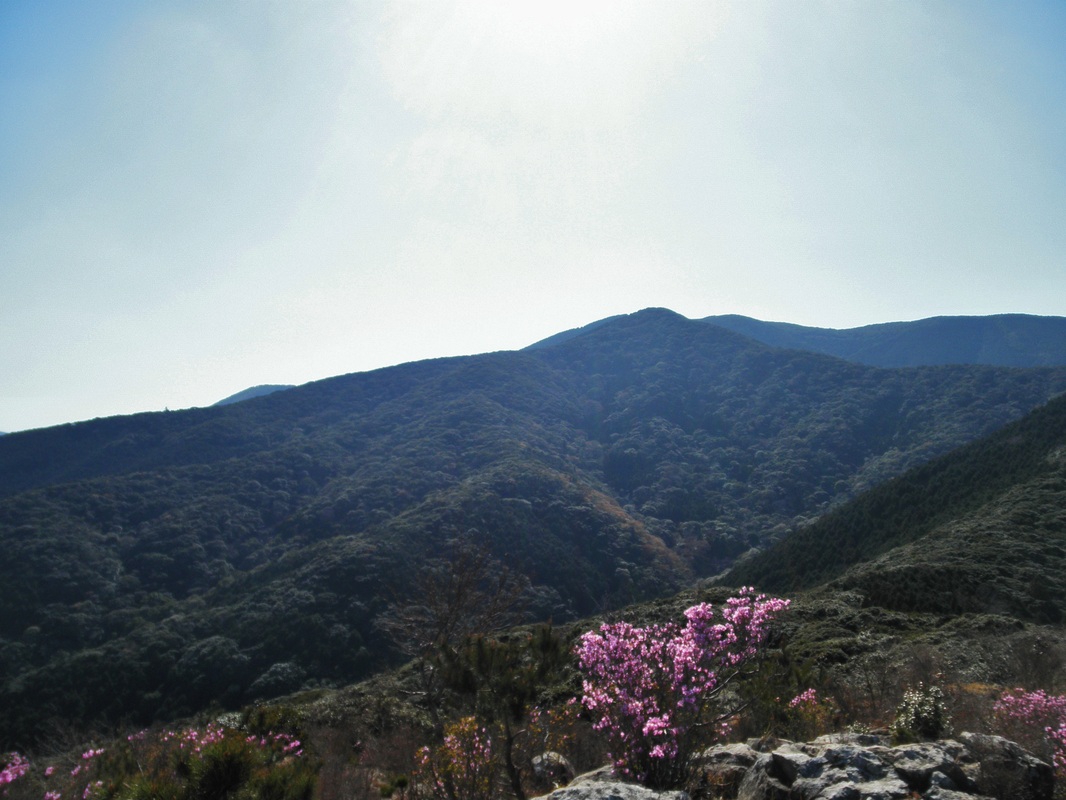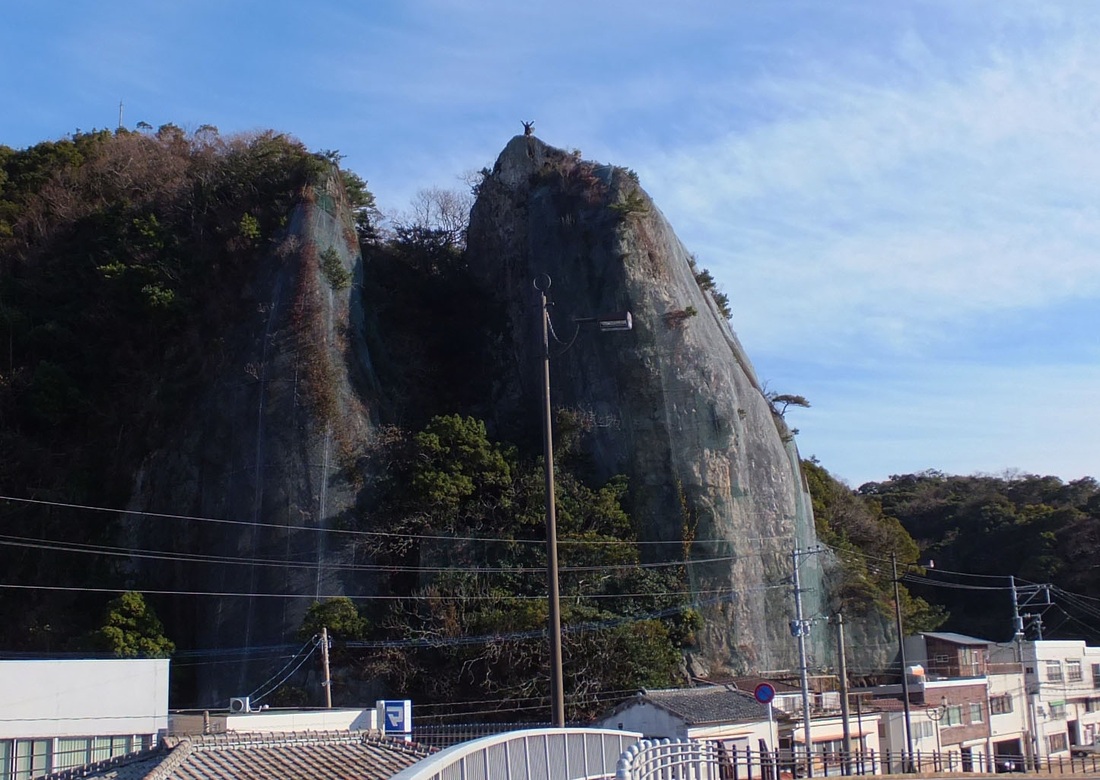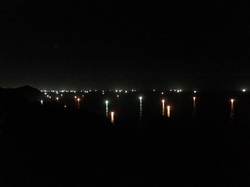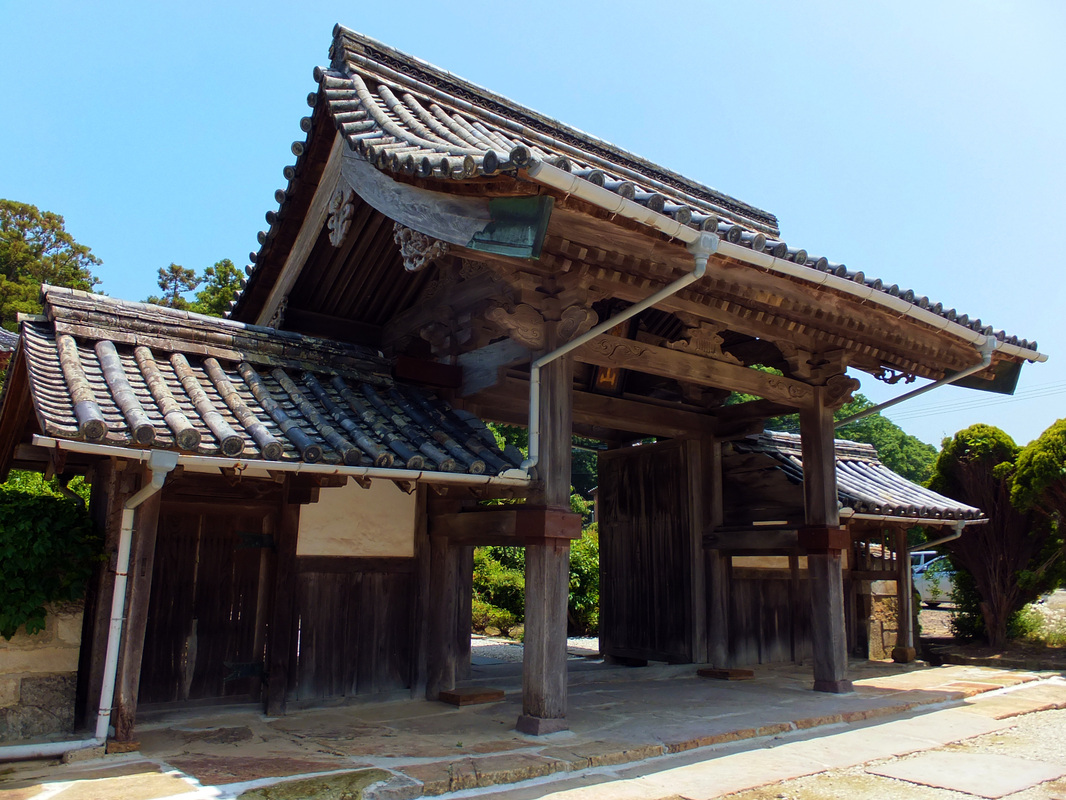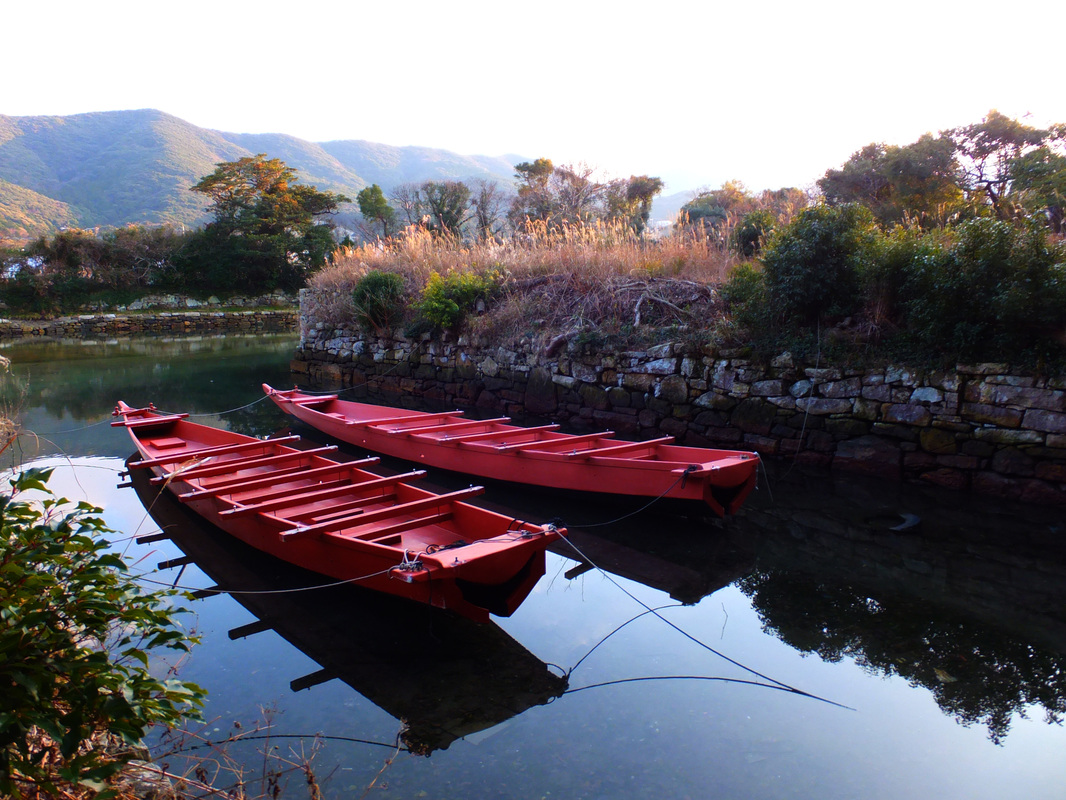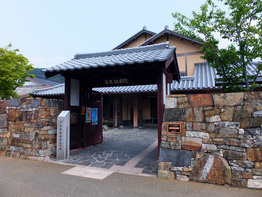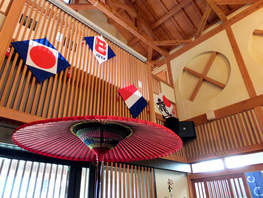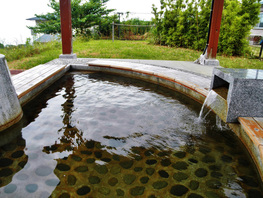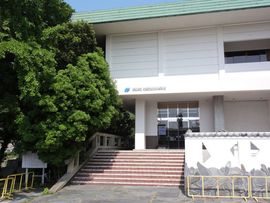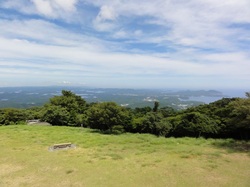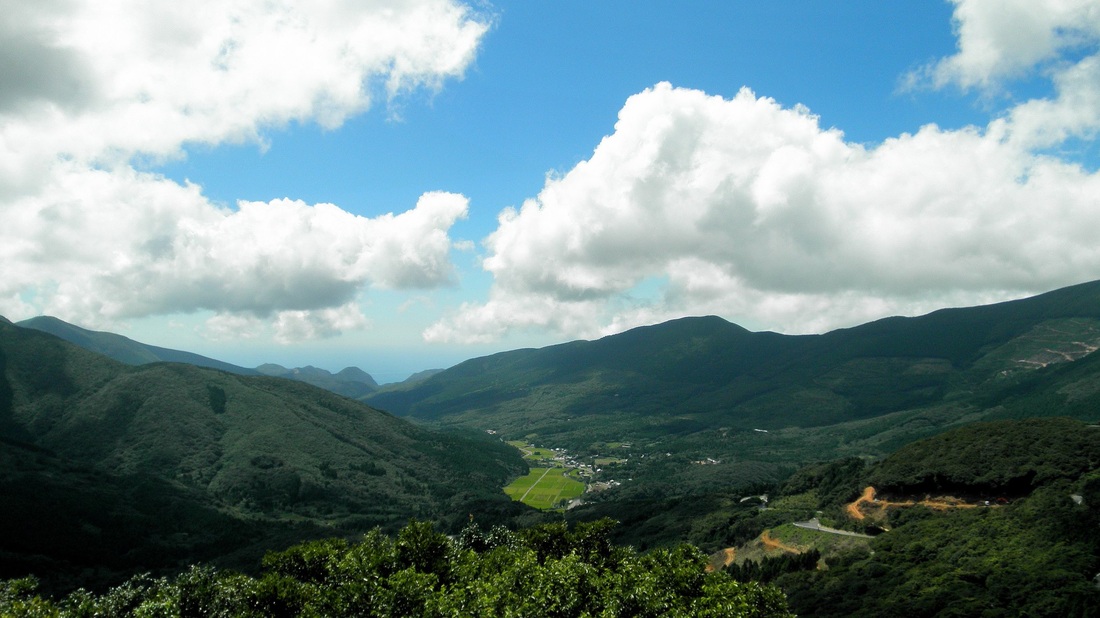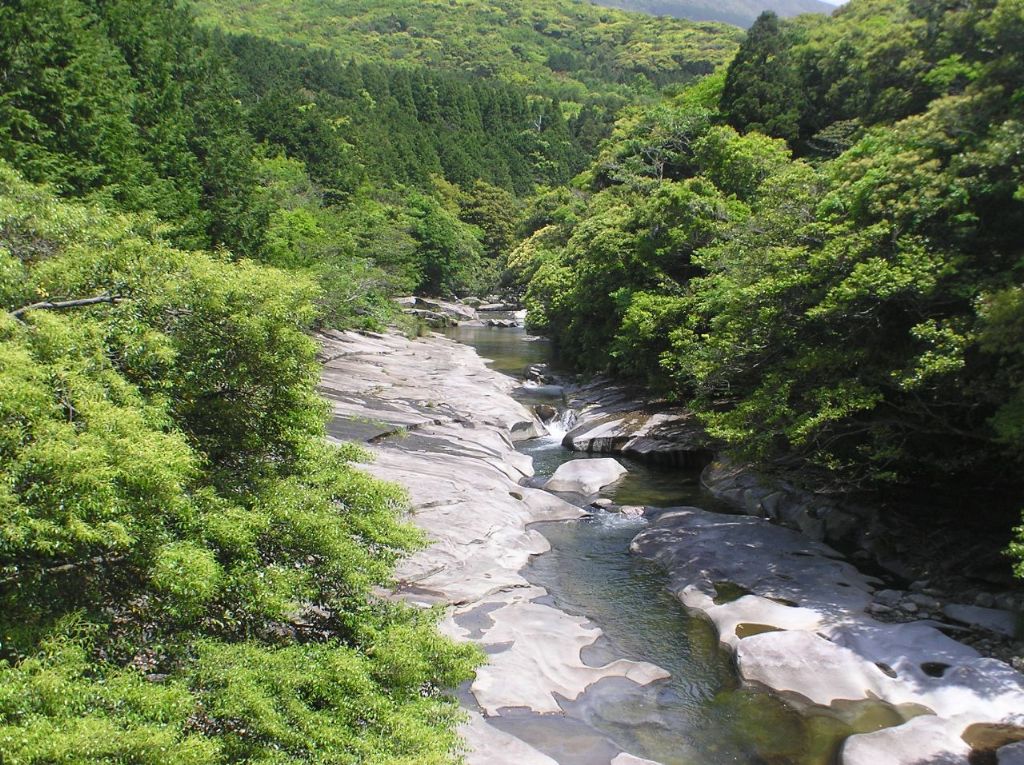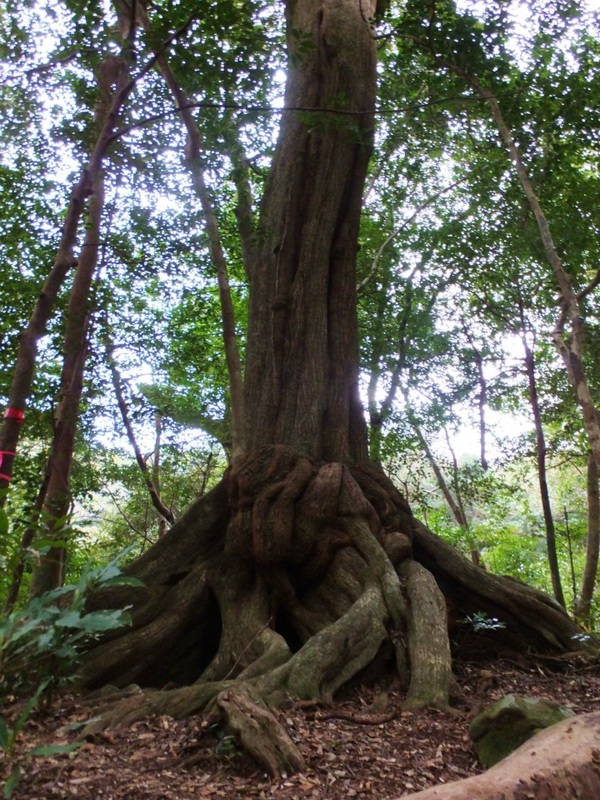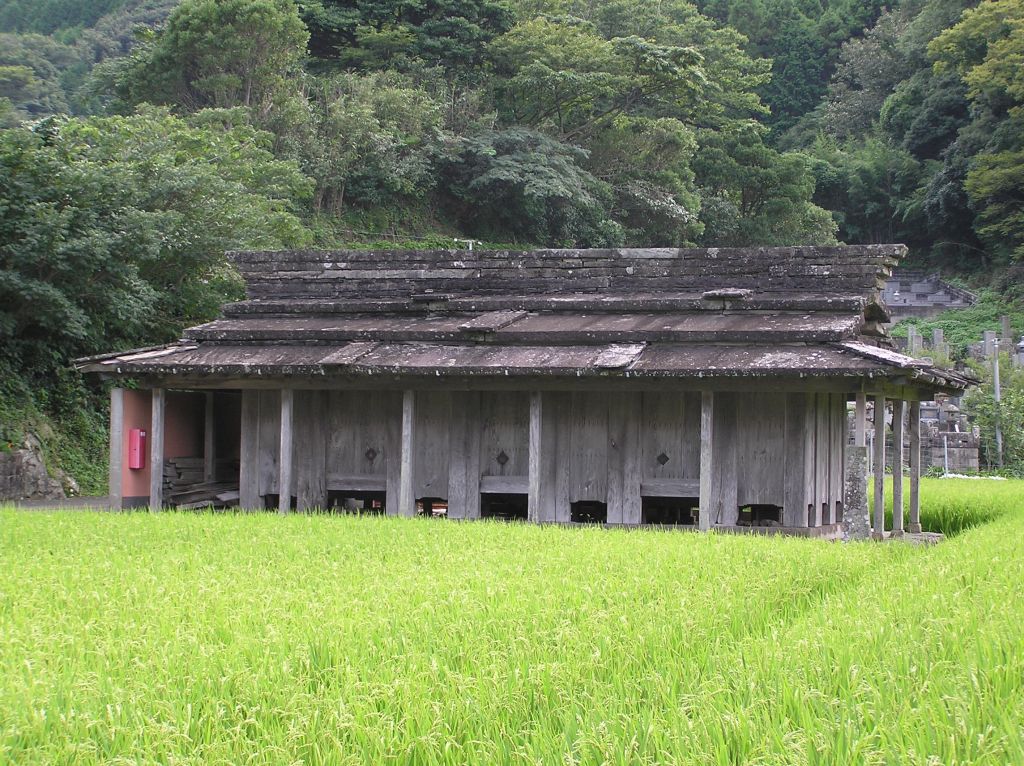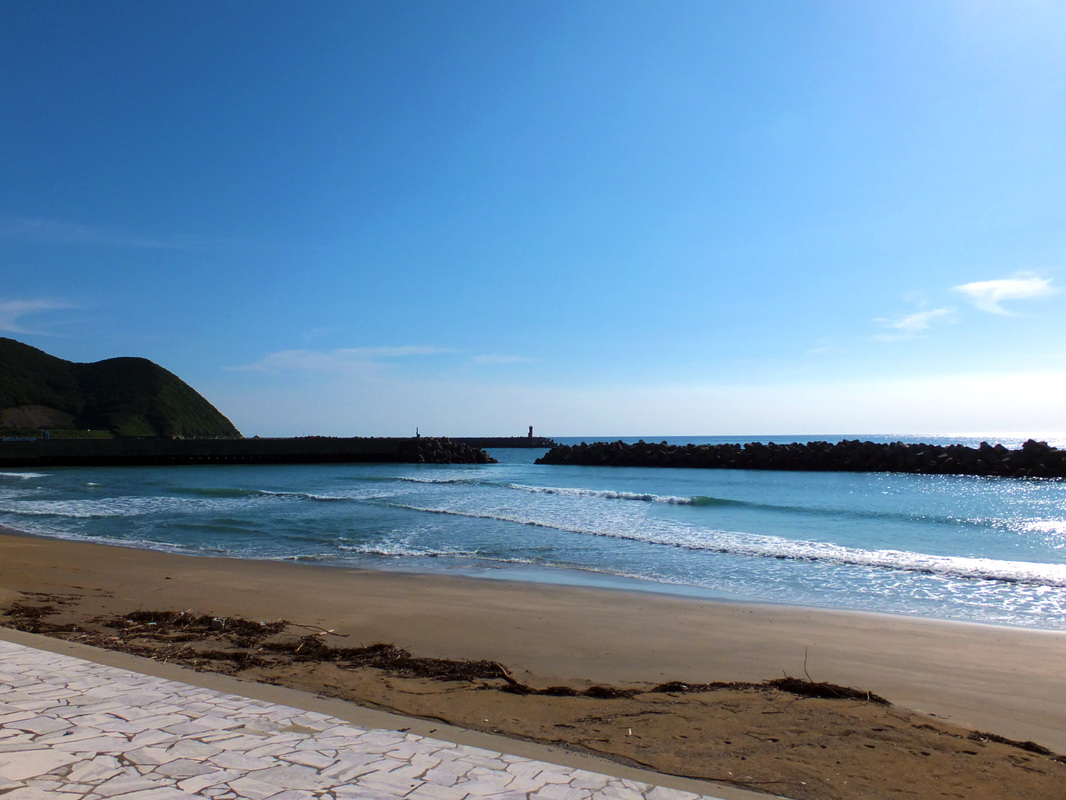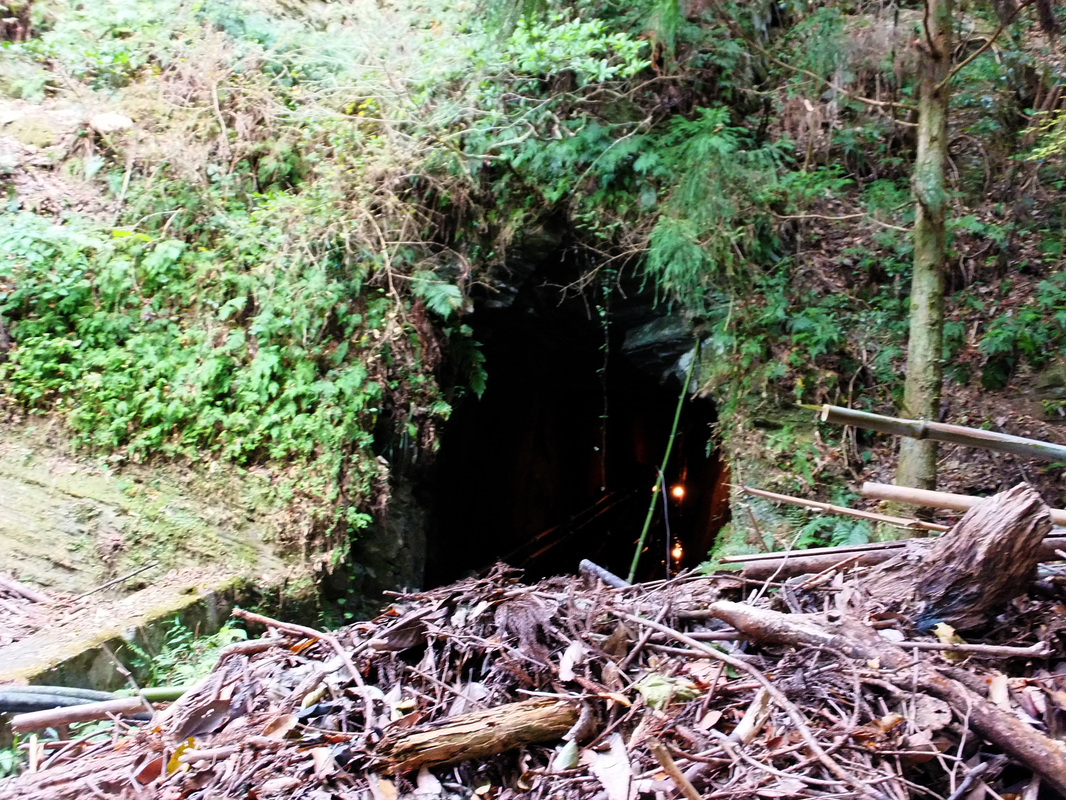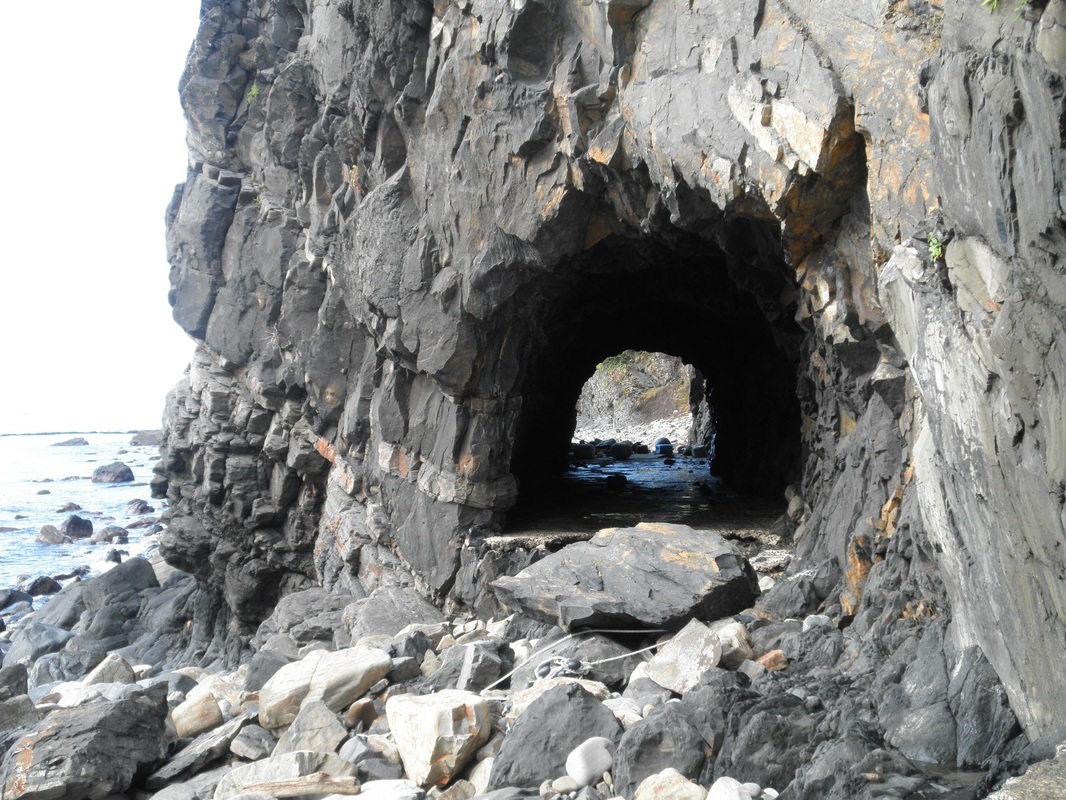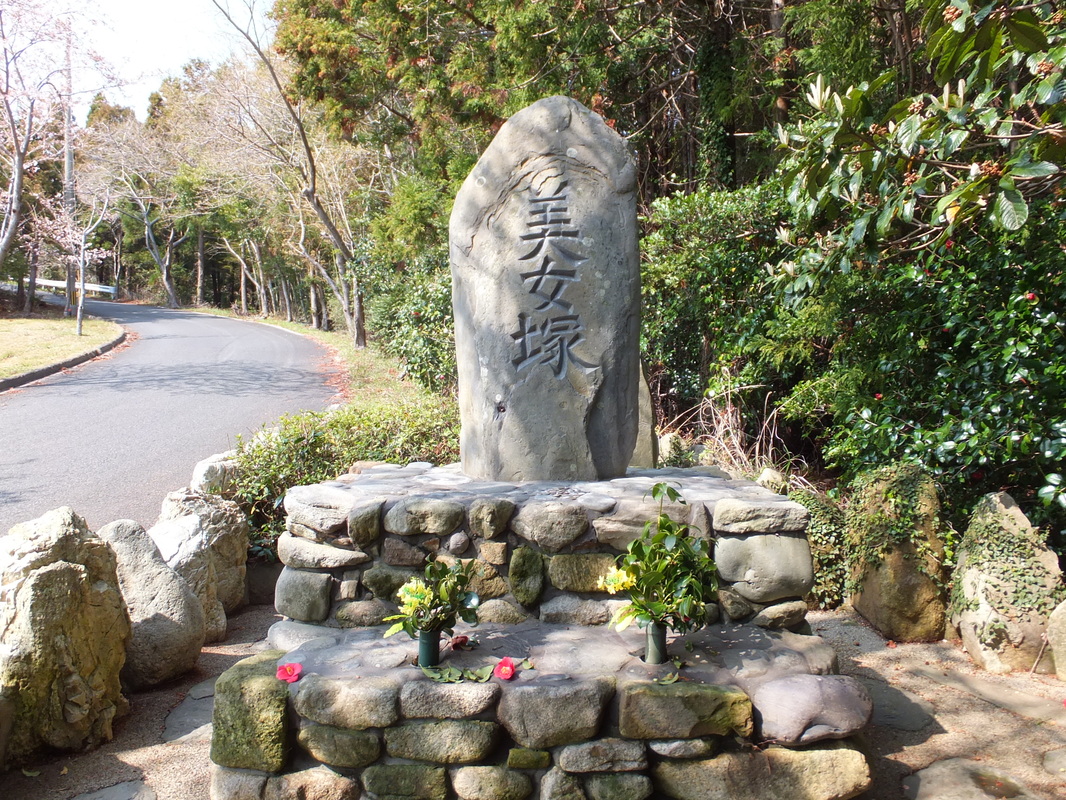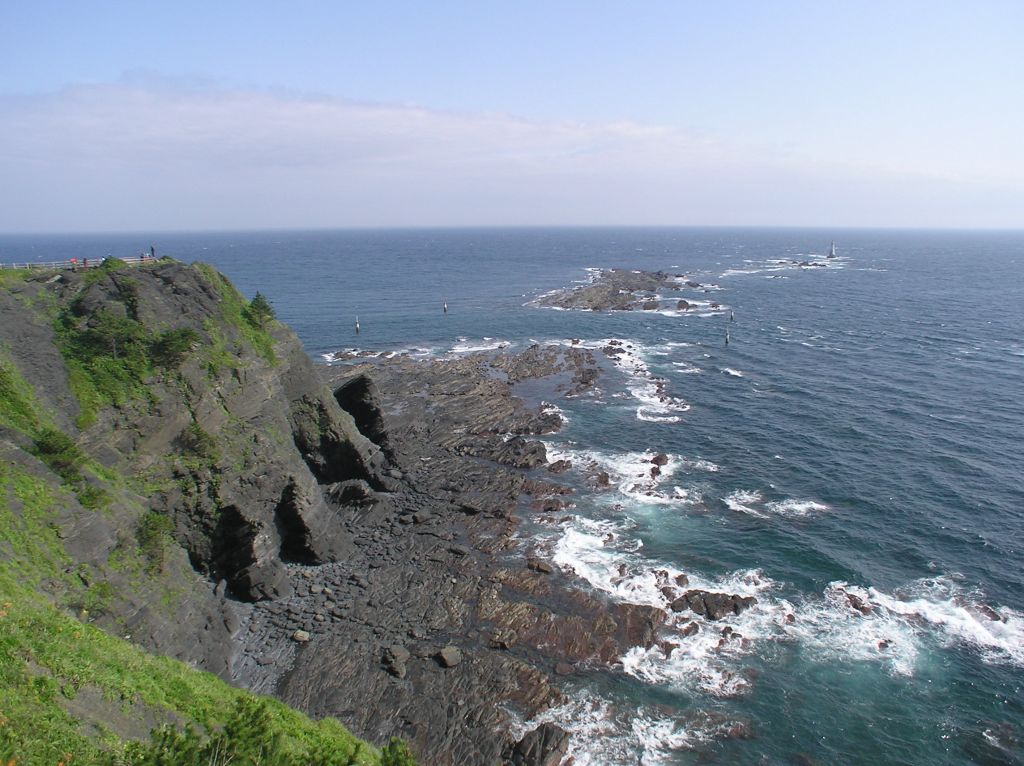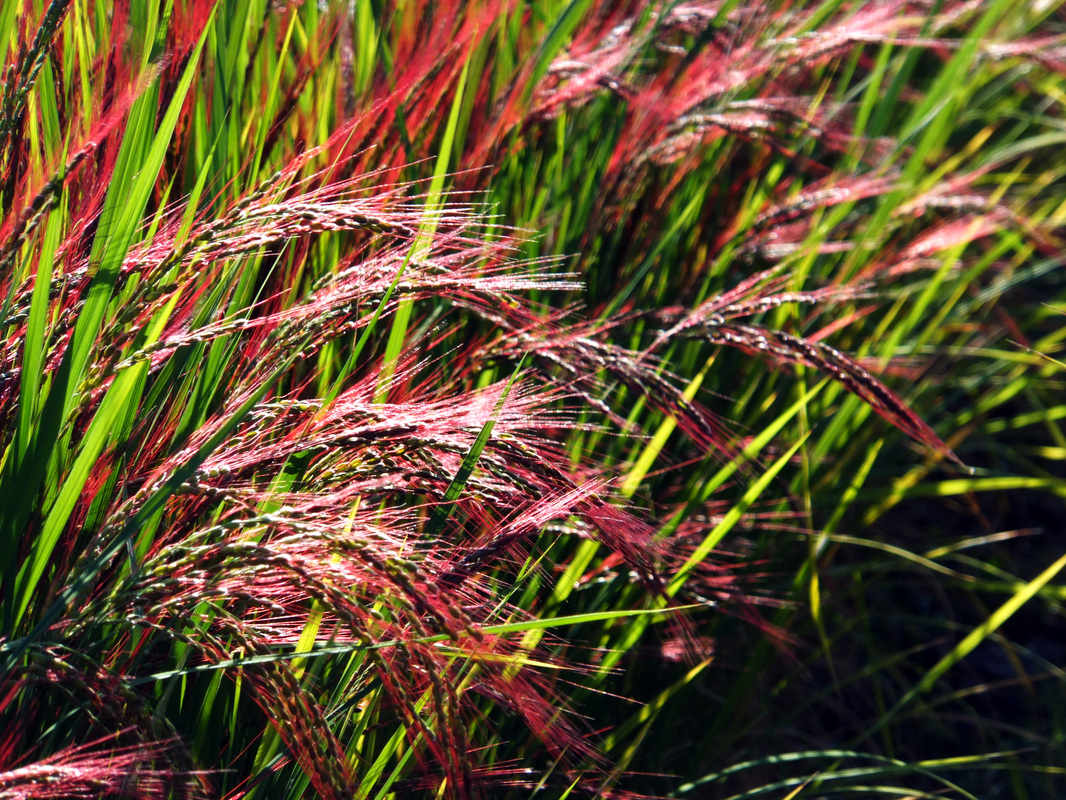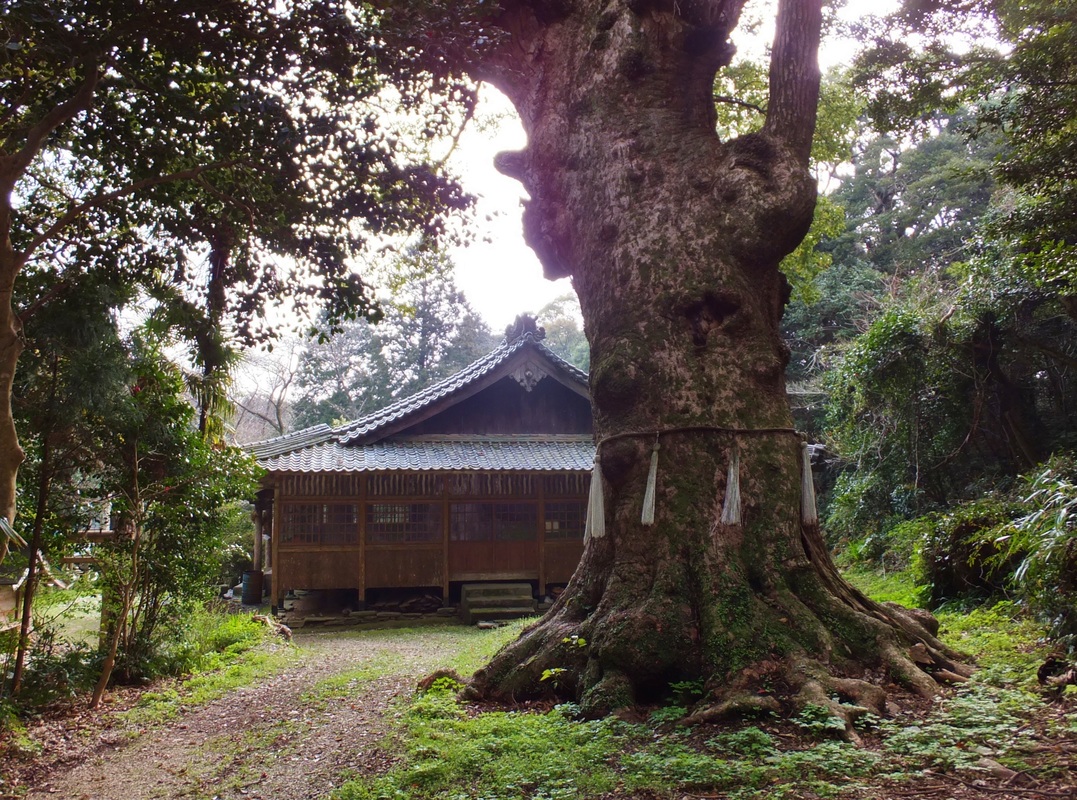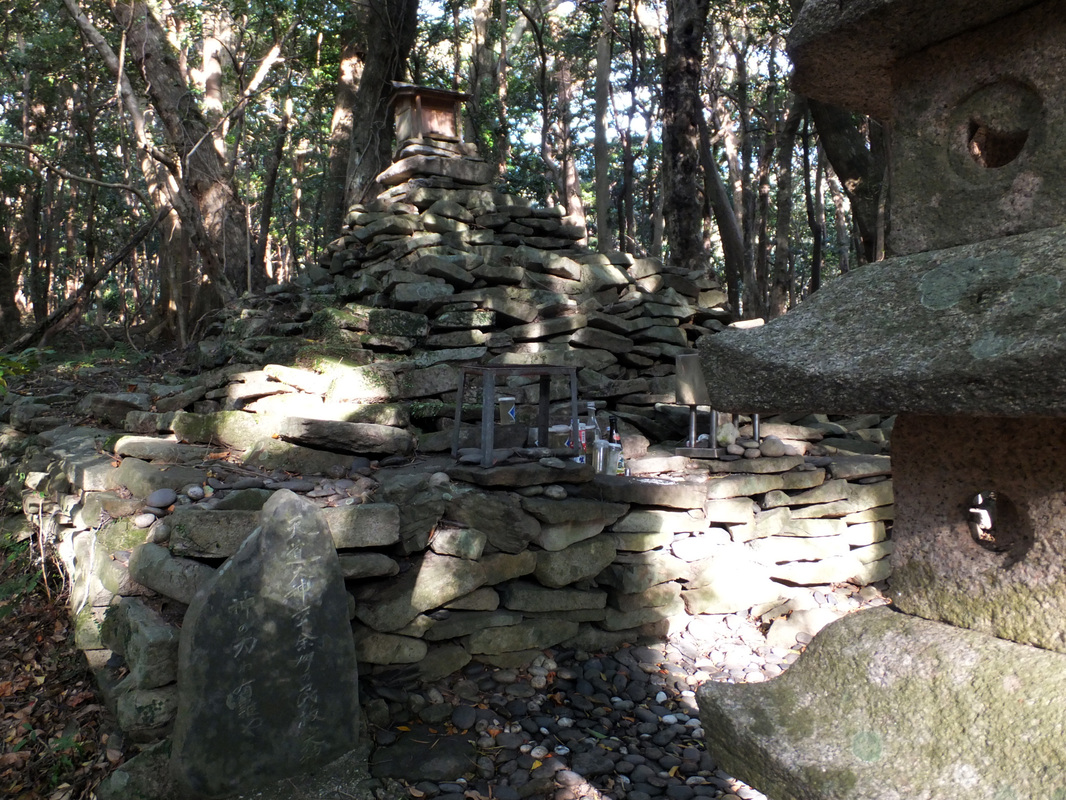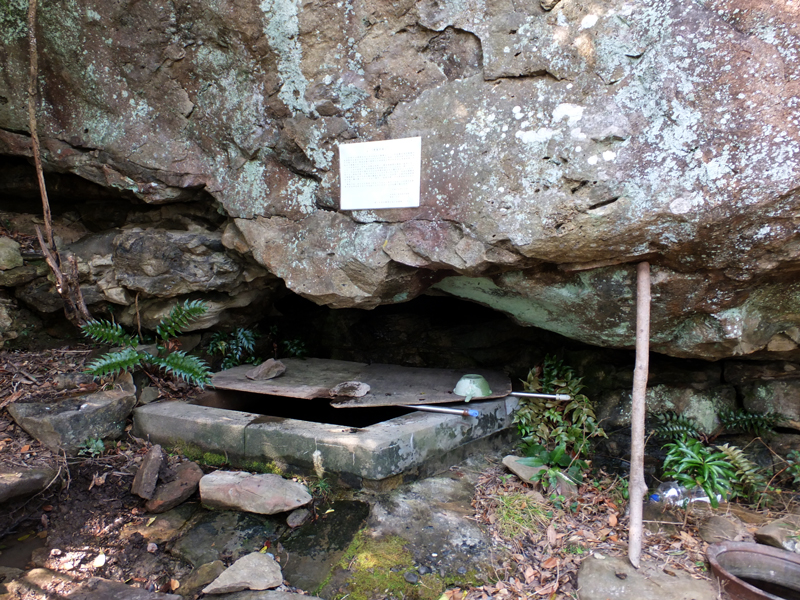Izuhara Town
Izuhara castle town areaWalking distance from Izuhara port. Izuhara is a former castle town and therefore, a number of historical sites remain today.
|
|
|
Banshoin Temple
Built by the second lord of the Tsushima domain. Soh Yoshinari in 1615 to pray for his father's happiness in the next world. Banshoin is the revered family temple of the Soh clan. Banshoin contains a Momoyama Era style temple gate, 100 step stone staircase, the Buddhist mortuary tablet of a Tokugawa Shogun, and materials used for correspondence with Korea. 15 min walk from the port Open 9:00-18:00 Admission Fee ¥300 |
|
Seizanji Temple
Seizanji temple is now a popular tourist place and lodging. Zen meditation is available each morning for free. The place was also used as a diplomatic institution in the 18th and 19th centuries. 15 min walk from the port Admission Fee to "Iteian" (former diplomatic institution) ¥100 Open 9:00-18:00 |
|
Shimizuyama Castle Ruins
Shimizuyama is a 206m high mountain that overlooks Izuhara, Tsushima's largest town. Toyotomi Hideyoshi ordered the construction of a castle on the mountain as part of his ill-fated plan to conquer Korea in the 1590s. Today, remnants of the castle's 3 walls still feature prominently on the mountain. The hike to the top is short, taking only about half an hour, and the mountain can be reached on foot from Izuhara port. Handwritten multilingual signs guide the way. 20 min walk from the port (to the entrance) From entrance to third castle wall: 10 min hike Third castle wall to second castle wall: 10 min hike Second castle wall to first castle wall (summit): 10 min hike |
|
Tategami-Iwa Monolith
Located near the port, the kanji for “Tategami” means, “standing turtle” thus where the monolith got its name. Look for the stairs that lead to a shrine. There are trails from there that lead to the top of the rock. It is about a 10 minute hike. A minute walk from the port (to the entrance) |
|
Isaribi Park
"Isaribi" lights of squid boats off the coast of Tsushima light up the ocean as night approaches. Fishermen use bright lights to attract squid to their boats. This picture was taken at Isaribi Park in Izuhara, which takes its name from the lights. The park features exercise equipment and, from April to November, a foot bath is available to visitors at no charge. 20 min walk from the port |
|
Kokubunji Temple
The main gate was built in 1807. The temple burned down during the Meiji era (late 1890s to early 1900s) but the main gate was saved from the fire. There used to be a hall in the premises which was used as a lodging for the Korean envoys. The temple including the main gate was recently restored. 25 min walk from the port Free Admission |
|
Ofunae Port
At the mouth of Kuta River are remants of five boat docks that belonged to the Tsushima domain. The dock was created in the third year of the Kambun Era (1663). The embankment's piled up stones are preserved in the same form as that time. The main gate, storehouse, and resting place for feudal lords remain here. 30 min walk from the port 5 min by car. 15 min by bike. |
Tourist Institutions
|
Former Residence of Nakarai Tosui
Nakarai Tosui was a writer and the mentor to Higuchi Ichiyo, the woman featured on the current 5000 yen bill. His former residence was rebuilt for use as a tourist institution and museum. There are displays about Nakarai as well as a number of Japanese cultural experiences. 20 min walk from the port Open 9:00-18:00 Free admission Closed on Tuesdays 【Japanese Culture Experiences】 ※ Fee required (subject to change) - Kimono Wearing (¥1,000) - Tea Ceremony (¥500) - Pearl Accessory Making (¥500 + Materials) - Origami (¥100) - Game of go (Free) |
|
Tsushima History & Folk Customs Museum
Opened in December 1978, the museum compiles and exhibits treasures such as the island's cultural assets, archaeological and historical materials, folk custom materials, family head's personal libraries, and more. Among other things, the Emaki picture scroll used for correspondence with Korea is a must-see. 15 min walk from the port Open 9:00-17:00 Closed on Mondays ※ If Monday is a national holiday, then museum will be closed the next day. |
Other Places
Access from Izuhara port. Must rent a car or take the bus
|
Mt. Tatera
Mt. Tatera is 559 m above sea level. Its primeval forest, on the north side slope, extends from the 120 m above sea level lowland up to the mountain's peak. From the vicinity of the 350 m boundary, a beech grove in the lower region and an oak grove in the upper region are developing. The whole area is an extremely delicate existence. 20 min by car to the entrance for the hike |
|
Ishiyane Stone Roof Buildings
On the west coast of the Izuhara town area, is one of the few remaining stone roof houses. Stone sheets made on Tsushima tile the roof of the raised-floor building, which is used as a storehouse. This type of building is rare in Japan, and can only be seen in Tsushima. 30 min by car |
|
Tsushima Silver Mine in Kashine
Tsushima has the oldest silver mine in Japan. It is said that silver was first found during the 7th century and mining continued until the 13th century. Mining restarted during the Edo period (1600~) and closed around late 19th century. Today, some of the remains can be seen in the western side of Izuhara town. The picture is the entrance of the silver mine in Kashine. The site is off-limits. 35 min by car |
|
Bijozuka (Beautiful Woman's Tomb)
In Tsutsu, there is a sad story about a young woman. The woman was chosen to serve at the imperial court because of her beauty; however, she did not want to leave her old and frail mother behind. She became so distraught that on the day she was to leave Tsutsu, she bit her tongue and killed herself while screaming "May beautiful women never be born in this village again!" According to legend, after this incident, women in Tsutsu tried to hide their faces and wore kimono made of scraps of cloth sewn together so that they would not stand out. 35 min by car |
|
Cape Tsutsuzaki
Beyond scattered reefs and islets, the white Tsutsuzaki lighthouse thrusts into the East China Sea. As the border between the Korean strait and the Tsushima strait, the current in this area is strong and has been regarded as an unforgiving sea passage since ancient times. 45 min by car |
|
Akagome (Red Rice) Sacred Rice Field
Akagome is extremely rare, even in Japan. Beginning of September is when the akagome is the reddest. The red color lasts only about a week. Akagome shinto ritual has been performed in Tsutsu for more than thousand years. Unfortunately, due to a lack of people performing the ritual, it is in danger of dying out. Only men are allowed to go in the sacred rice field. 40 min by car |
|
Takuzudama Shrine
Located in Tsutsu, Takuzudama shrine has been a sacred place since ancient times to worship priest Tendo, who had psychic abilities to help people. The goshinboku, or sacred tree, is a feature present at many Shinto shrines. As pictured here, the tree is usually quite large and a shimenawa (talisman rope) is tied around the trunk. This tree is 30m tall with a trunk circumference of just over 7m and is said to be at least 650 years old. 40 min by car |
|
Hacchokaku
Located in Azamo, the piled up stones at Hacchokaku is said to be priest Tendo’s grave. The area is also called “Osoroshi-dokoro (The land of terror)” and therefore, people did not approach it in the past. To avoid being cursed, you must walk backwards to the nearest torii gates after visiting. 40 min by car |
|
Ougon-no-Izumi (The Gold Fountain)
Located in the Kouzaki peninsula, this fountain was used by the Kouzaki lighthouse workers in the past. Since many people who drank the water eventually got promoted or succeeded in business, the fountain is said to bring success in life. The water is still drinkable today, but it is highly recommended to boil it first. See Kouzaki Peninsula for more details. |

